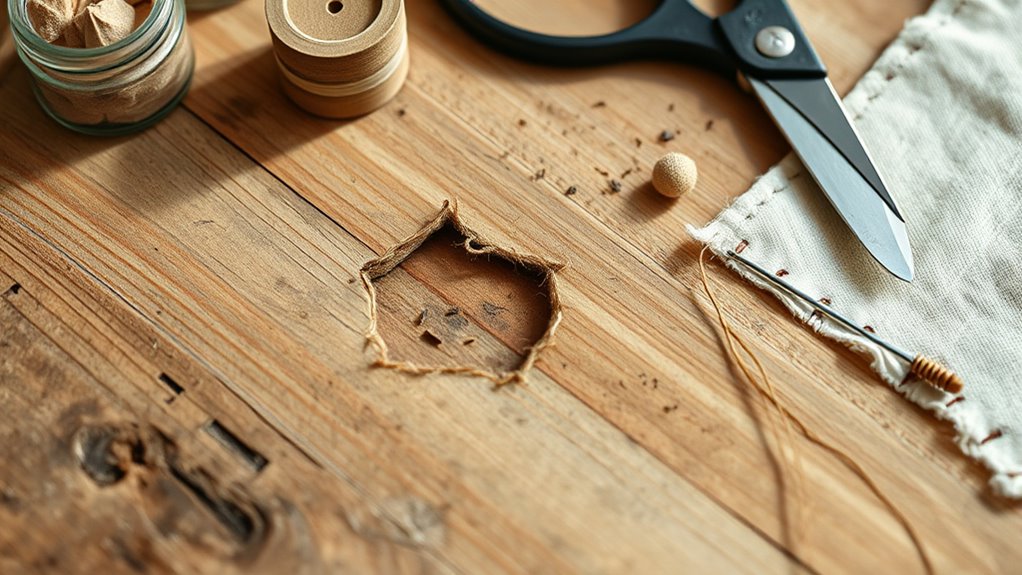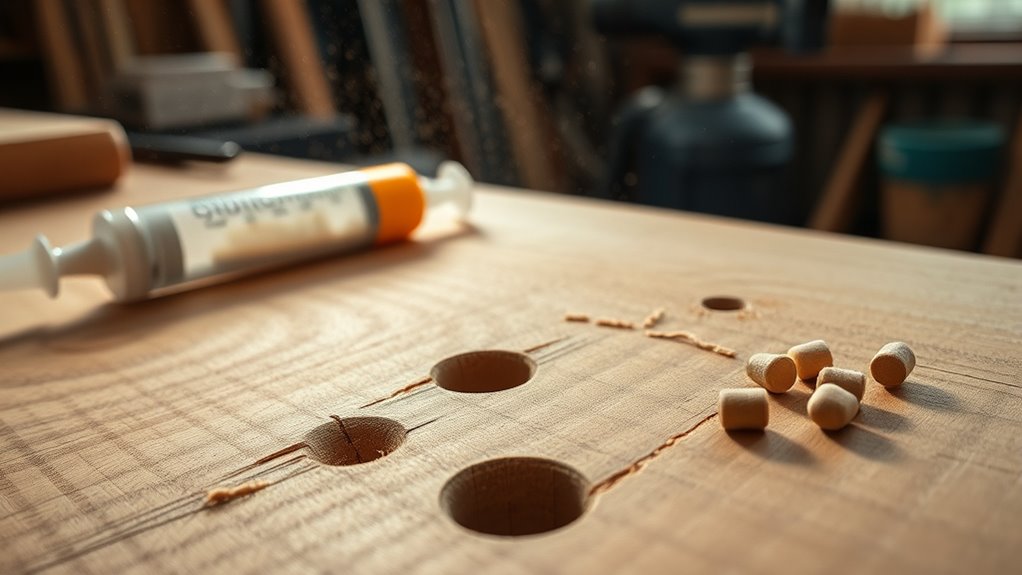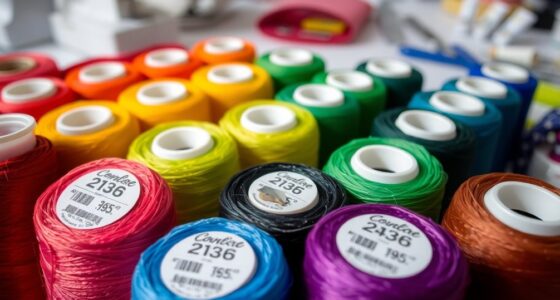If you’ve made holes, snags, or wrong cuts, start by turning off your tools and evaluating the damage safely. For holes in drywall, fill with spackle and smooth it out; for wood, use filler and sand down rough edges. Correct wrong cuts by carefully re-measuring and marking before re-cutting. Take your time, double-check your work, and keep tools in good shape. Keep going to discover more tips for fixing mistakes and perfecting your project.
Key Takeaways
- Assess the damage to determine if filling or cutting out and replacing is necessary.
- Use appropriate repair materials like spackle for holes or wood filler for scratches.
- Measure carefully and mark precise cut lines before making adjustments.
- Smooth repaired areas with sanding or putty knives to ensure seamless results.
- Learn from mistakes by evaluating causes and adjusting techniques for future accuracy.

Everyone makes mistakes, but how you respond to them can define your growth. When you’re working on a project, errors like holes, snags, or wrong cuts can happen despite your best efforts. The key is knowing how to recover quickly and effectively. First, it’s vital to prioritize safety precautions. Always turn off and unplug your tools before making any adjustments or fixing mistakes. Wearing safety glasses and gloves protects you from splinters, debris, or accidental cuts while you work on repairs. Keeping your workspace organized and free from clutter minimizes the risk of accidents, making sure you can focus on fixing the error without added hazards.
Prioritize safety and stay organized to effectively fix mistakes and keep your project on track.
Tool maintenance plays an indispensable role in preventing mistakes, but when errors do occur, proper tool care can make repairs easier. Dull blades or poorly maintained tools can cause uneven cuts or slips, leading to holes or unwanted snags. Regularly inspect and sharpen your tools to maintain precision. For instance, a dull saw blade can veer off course, resulting in a wrong cut. Clean your tools after each use to prevent buildup of debris that might impair their function. Proper storage also prevents rust and damage, keeping your tools in prime condition for future tasks. When you’re ready to fix a mistake, make sure your tools are in top shape, which will make your corrections more accurate and less frustrating. Additionally, understanding the different projector technologies can help you choose the right equipment for your home cinema, minimizing setup errors and enhancing your viewing experience.
Once safety is secured and your tools are well-maintained, evaluate the damage carefully. For holes or snags, determine whether they can be filled or need to be cut out and replaced. If you have a hole in drywall, patch it with spackle, smoothing it out with a putty knife. For wood, use wood filler or a sanding block to smooth rough edges caused by a wrong cut. When making a correction, take your time; rushing often leads to further mistakes. Use a measuring tape and marking tools to double-check where cuts should have been made, and mark the new cut lines clearly. This helps guarantee your adjustments are precise, saving you time and effort.
Finally, learn from each mistake. Take note of what caused the error—was it rushing, mismeasurement, or tool malfunction? Adjust your approach accordingly for next time. Developing good safety habits and maintaining your tools will reduce future errors and make repairs less intimidating. Remember, mistakes are part of the learning process. With patience, the right safety precautions, and proper tool maintenance, you can turn setbacks into opportunities for improvement, keeping your project on track and your skills sharp.
Frequently Asked Questions
How Can I Prevent Mistakes Before They Happen?
To prevent mistakes before they happen, you should implement effective preventative measures in your workflow. Double-check measurements and plans before cutting, stay focused, and avoid distractions. Use quality tools and make sure they’re sharp to prevent errors. Practice error prevention techniques, like marking your cuts clearly and reviewing your work step-by-step. Staying organized and attentive helps you catch potential issues early, reducing the chance of mistakes and improving your overall accuracy.
What Tools Are Best for Quick Repairs?
When it comes to quick repairs, you want tools that are efficient and easy to use. Power tools like mini drills and staplers speed up fixing holes or snags, saving you time. Keep a handy repair kit with essentials like glue, patches, and small tools nearby. These tools help you fix mistakes swiftly, ensuring your project stays on track without hassle. Always choose quality tools for the best results.
Are There DIY Methods for Complex Errors?
Did you know that 70% of DIYers attempt to fix complex errors themselves? When tackling these issues, prioritize DIY safety by wearing protective gear and working in well-ventilated areas. For repair budget concerns, many complex errors can be managed with household items and patience. While DIY methods are feasible, know your limits—sometimes consulting a professional guarantees safety and a quality fix, saving you time and money in the long run.
How Do I Evaluate if a Mistake Is Fixable?
When evaluating if a mistake is fixable, you should start with a quality assessment of the damage. Look at the size, location, and type of error, then consider repair feasibility—can it be patched, sewn, or concealed without compromising the overall quality? If the flaw is minor and repair options exist, it’s worth fixing. However, for extensive damage, it might be best to replace that section altogether.
When Should I Seek Professional Help?
You should seek professional help when you’re unsure about safety precautions or your skill assessment. If a mistake could cause injury or damage, it’s smarter to consult an expert rather than risk worsening the problem. When the task exceeds your experience or confidence level, don’t hesitate to get professional assistance. Prioritizing safety and knowing your limits helps guarantee a proper fix and avoids costly errors down the line.
Conclusion
No matter how many mistakes you make, remember that every setback is just a stepping stone. With these five fixes, you can patch holes, fix snags, and correct wrong cuts with confidence. Don’t let errors get you down—every problem has a solution waiting to be found. Keep your chin up and stay resourceful; after all, it’s not the end of the world, just a bump in the road. You’ve got this, so keep moving forward!









